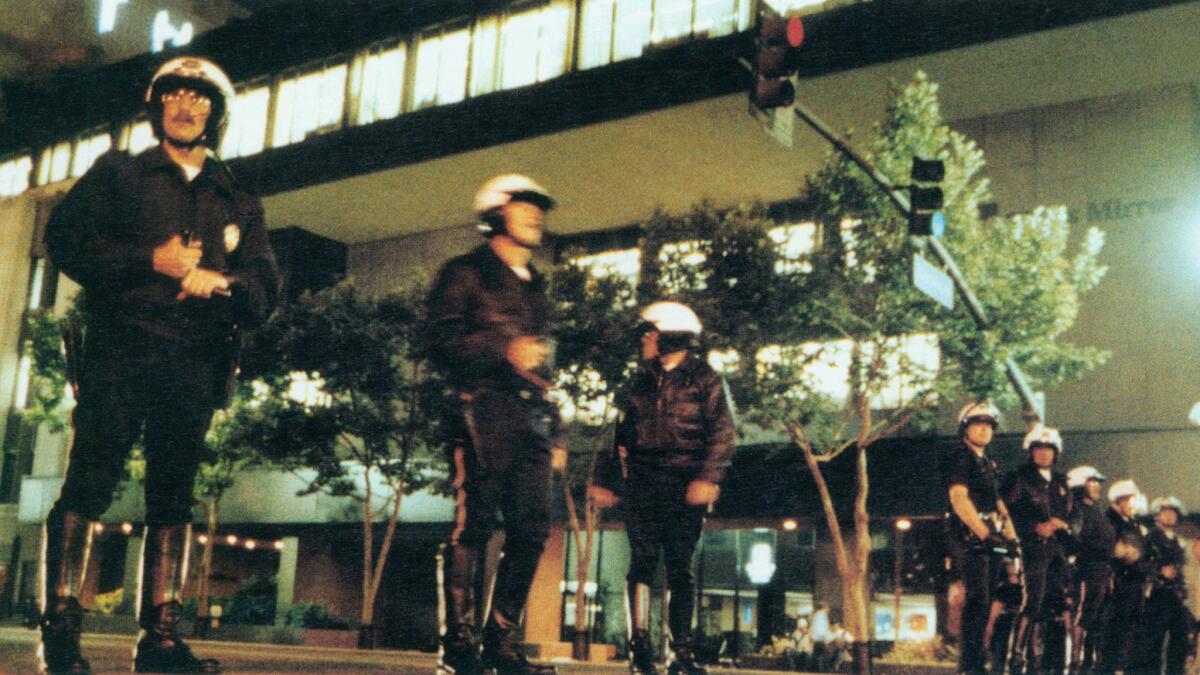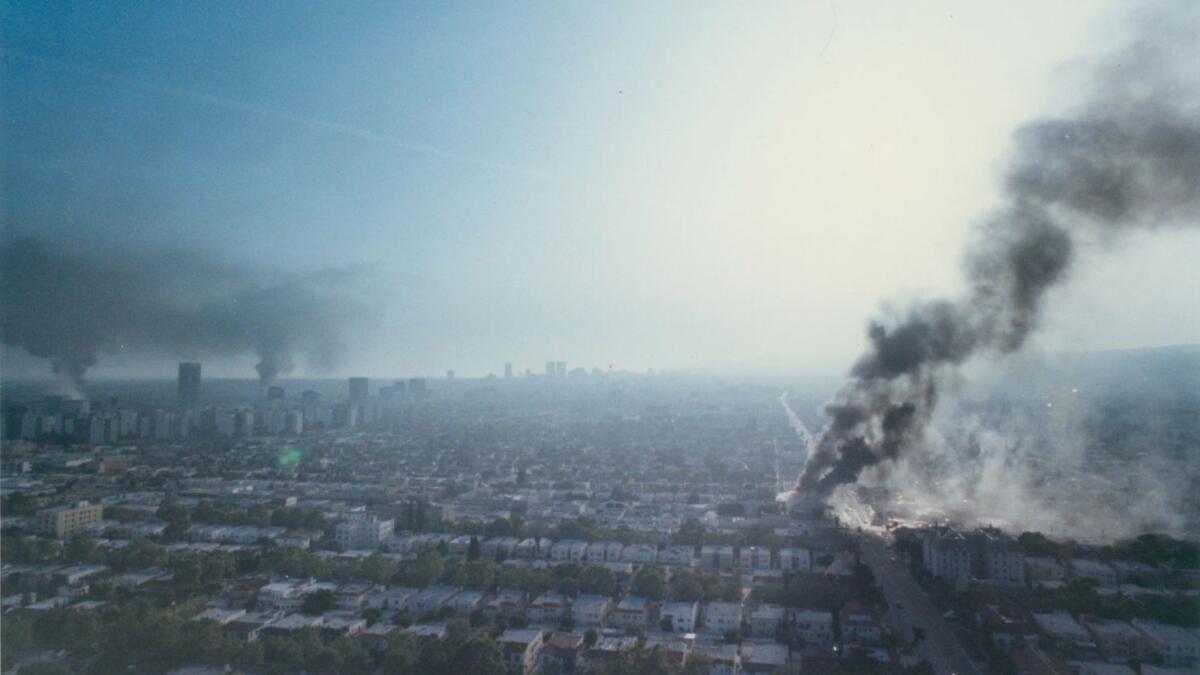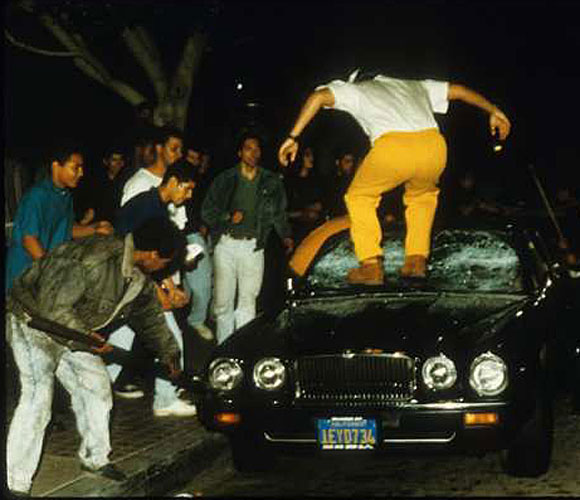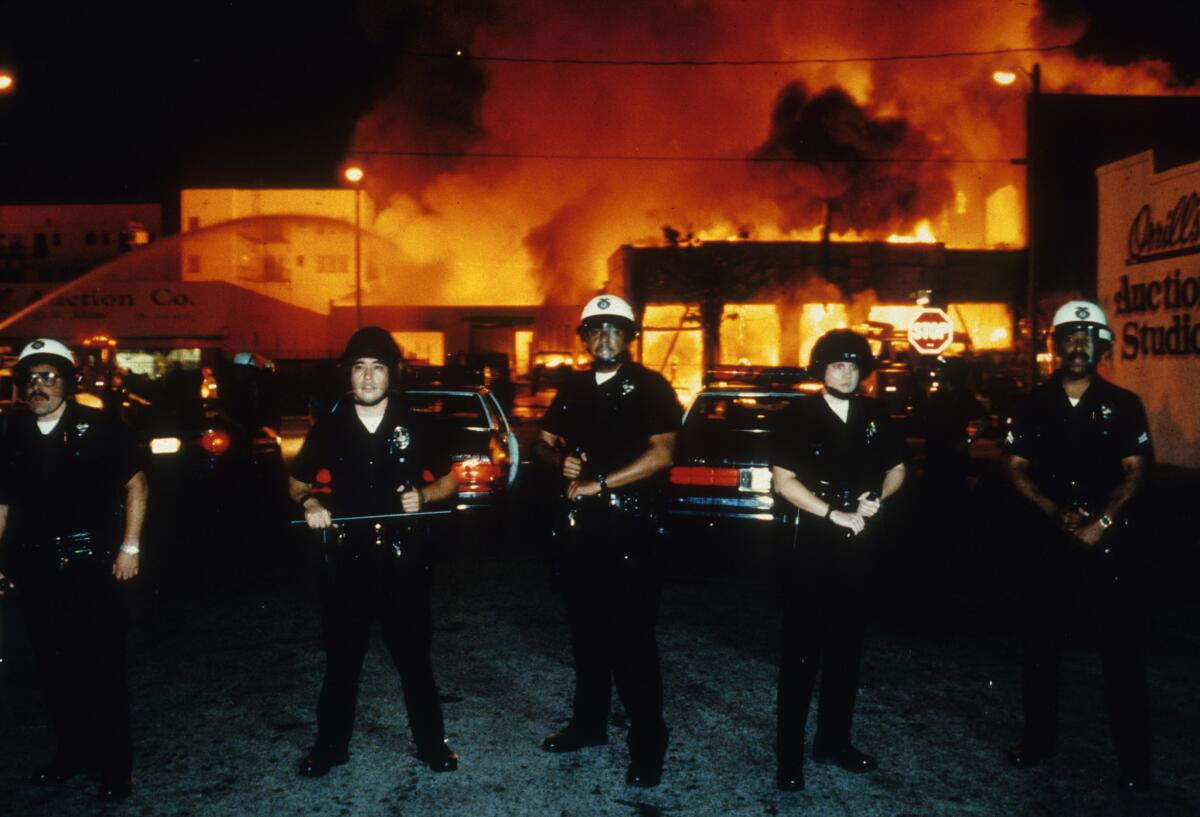In his own words: Chief Charlie Beck on the riots, the LAPD and the future

The Los Angeles Police Department is, by many measures, a different institution than it was during the 1992 riots.
Back then, the department was reeling from the aftermath of the Rodney King beating, faced growing mistrust in minority communities and was fighting rising crime. Today, the department is more diverse, crime has plummeted over the last two decades and the department has improved relations with minority communities.
The riots provided one more black eye for the department that prompted major reforms. When violence erupted at the corner of Florence and Normandie avenues, the LAPD moved in. But, outnumbered, the police infamously retreated. For the next few hours, a horrified city — and world — watched on live television as rioters pulled motorists out of their cars and beat them, set buildings on fire and looted stores, with no police in sight.
Soon afterward, embattled Chief Daryl Gates was out and a number of reforms were begun.
This week, current L.A. Police Chief Charlie Beck discussed the LAPD — circa 1992 and 2017. Here are his remarks:

what went wrong in 1992
‘Failure of the institution'
“You have to realize that this was not a single event. It wasn’t just Florence and Normandie, it was the entire two years leading up to it, the constant drumbeat of dissatisfaction with the department at all levels, especially the chief, the fact that chief was a — quote, unquote — lame duck at the time, it was clear he was going to be replaced, and that has a huge effect on your immediate subordinates who want your job.
“When I talked to Gates about it, he believed it was a failure of individuals. My belief is it’s a failure of the institution. Those are two different things, and so, these things are hard to view outside of your own ego and your own experience, and I’m sure he had difficulty because of both of those things.”

IF WE HAD KNOWN THEN WHAT WE KNOW NOW ...
‘We wouldn’t have left’
“We wouldn’t have left. We would have brought in sufficient resources to restore order. But I think that, just like anything, taking it down to the individual police action, once it starts getting away from you, the results are foregone.
“You’re going to end up using significant force or resources. The best way to stop these things is on the preventative side, is to build enough relationships, so you have enough money in the bank of trust so everybody doesn’t turn against authority, which is what happened. Not everybody. But if it even goes from a fraction of 1%, which is what it is about normally, to 4% or 5%, the police department can’t handle that. It’s too many people.”

LAPD: 1992 vs. 2017
‘We’re majority minority now’
“We’re majority minority now. Sometime in the next two years, we’ll flip to majority Hispanic, not just majority minority. In ‘92, we were majority male white. Many with Vietnam experience, and shaped by that. And so going to war was not a big stretch for them. So that’s just the face of the LAPD.
“The chief was appointed for life at that time. The chief and the mayor hadn’t spoken in a year. Hadn’t spoken in a year. The mayor and I talk, I don’t know, five times a week. We don’t have extended long conversations, but there’s an exchange of information and a recognition of authority. There was no recognition of any authority over the police department at the time.”

LOOKING TO THE FUTURE
With hopelessness, you get 1965 or 1992
“I do not think this will happen again in the city of Los Angeles. And I am determined that it won’t. I worry, because I think in the city of Los Angeles we’ve learned this lesson. We’re not where we need to be, we’re not as far as we’d like to be, but we’re further along than anyone could have expected. But we’re influenced. Just like Black Lives Matter has a chapter in every major city, we’re influenced by national events.
“My fear is that we’re creating a climate nationally where people feel disenfranchised from the community they live in, where they feel that they are helpless to change their current situation, and that their future situation in their communities is hopeless, and you mix that together, you get ’65 [Watts riots] or ’92. I’m not talking about African Americans, but about immigrant communities, which sometimes contain African Americans. I think that is a very real danger.”
Start your day right
Sign up for Essential California for news, features and recommendations from the L.A. Times and beyond in your inbox six days a week.
You may occasionally receive promotional content from the Los Angeles Times.




